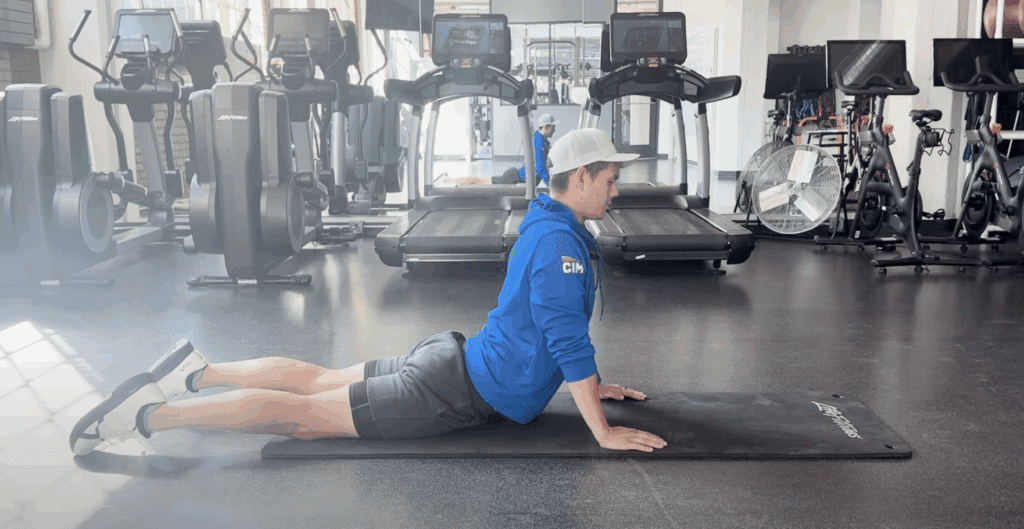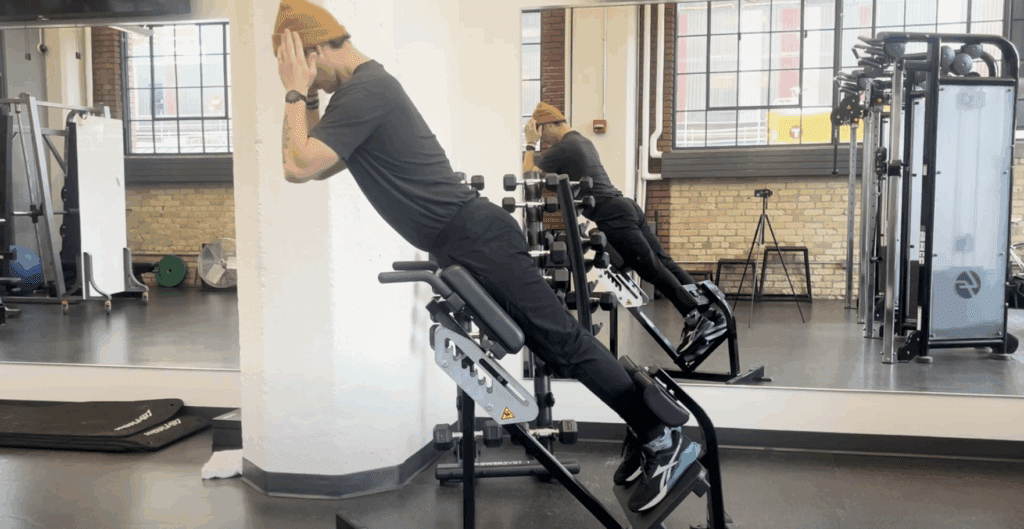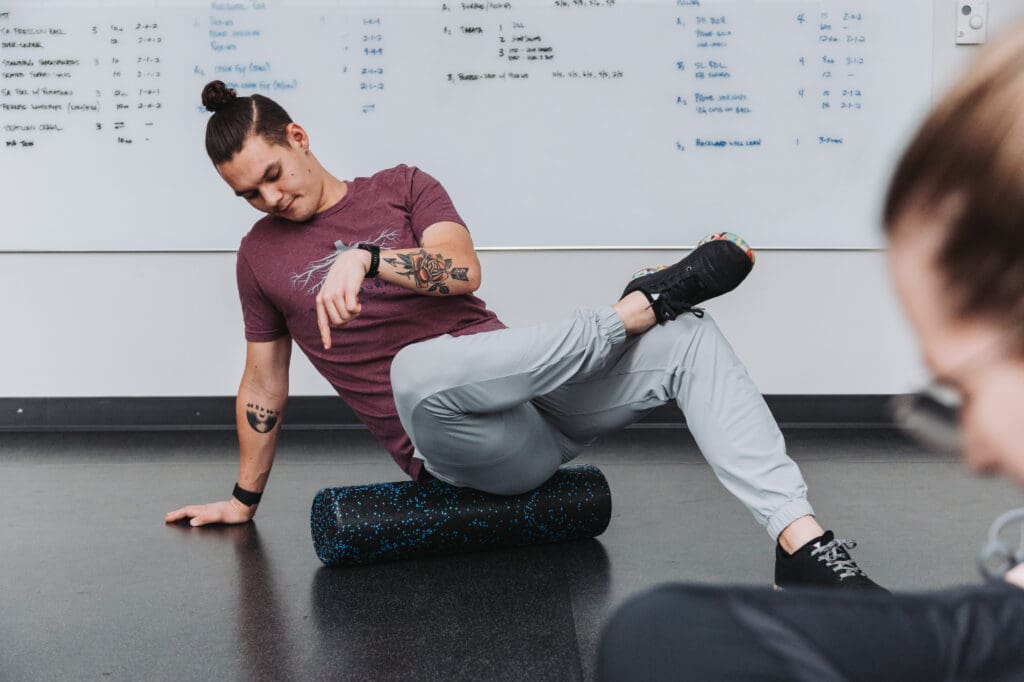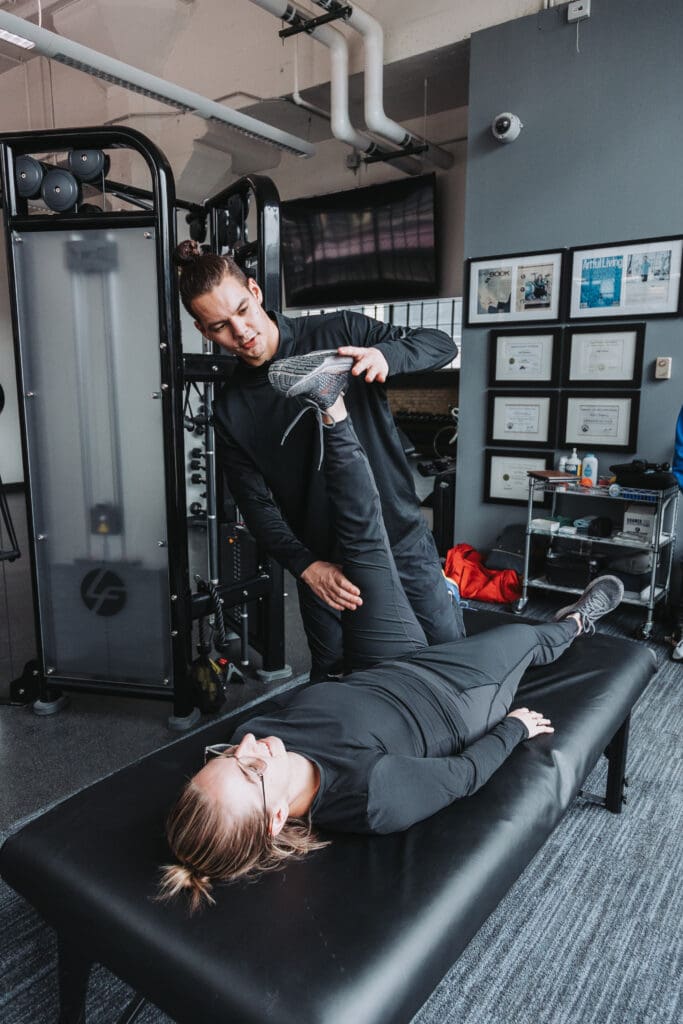
What I Have Learned About Low Back Pain in Runners From Coach Jacob Oak
September 4, 2025
Date
Category
Low back pain is one of the most common issues I hear about from clients and it is something I have personally struggled with as well. I have herniated my L4 disc twice, dealt with stiffness and discomfort from sitting at a desk all day, and even battled low back pain caused by my own running form. Over the years, I have had to use many of the exact strategies I am sharing in this blog, along with help from other practitioners, to find relief and build strength.
Because of that journey, this is a topic I care deeply about. Low back pain can feel overwhelming and discouraging, but with the right approach, you can take control of it and keep moving forward.
Disclaimer
Before we go further, please know I am not a medical doctor. The information in this blog comes from my coaching experience and the questions I frequently get from clients. My goal here is to provide a general guide that can help you better understand low back pain. This is not an individualized program, and it should not replace medical advice. If you have persistent or sharp pain, or symptoms that do not improve, please see a qualified healthcare provider.
Common Causes of Low Back Pain
Overactive or Tight Muscles
- Psoas and iliacus (hip flexors)
- Rectus femoris (front thigh)
- Quadratus lumborum (QLs)
Weak or Underactive Muscles
- Deep core (especially transverse abdominis or TVA)
- Glutes and accessory glute muscles (medius and piriformis)
- Hamstrings (often feel “tight” but are actually overstretched and weak)
When these imbalances show up, the low back takes on stress it was not built to handle, which can create chronic pain or sudden flare-ups.




Why Guidance Matters
Over the years, I have helped numerous endurance athletes work through low back pain. One thing I have learned is that there is no one size fits all approach. Every person’s situation is unique, and what works for one runner may not work for another.
That is why I highly recommend working with myself or another qualified practitioner instead of guessing and trying to fix things on your own. With the right assessment, such as 3D gait analysis or applied kinesiology, we can identify your specific imbalances and create a plan that actually addresses the root cause of your pain.
Nerve-Related Pain (Including Sciatica)
Nerve pain down the leg can be caused by many different things. While it is important to identify the specific nerve root, many people find relief through myofascial release (MFR) and decompression stretches.
Helpful Myofascial Release (MFR) Techniques
ELDOA Stretches for Decompression
Depending on the nerve root involved:
These can be powerful for creating space in the spine and relieving nerve compression.
Other Stretches That May Provide Relief
Why Strengthening Matters
Strength is one of the best tools for long-term back health. When the glutes, hamstrings, and core are strong, the spine stays supported and flare-ups are less likely. Strength also helps correct posture, which is a key factor in both preventing and relieving low back issues. This is why I always emphasize strength training for runners at Oak Endurance as a foundation for performance and durability.
Lifestyle Factors
How you live day-to-day plays a big role in back pain.
- Sitting: Prolonged sitting can put up to 40 percent more pressure on the lumbar discs compared to standing. If you sit for long periods, build in breaks to move and decompress.
- Standing posture: Slouching or leaning into one hip adds strain. A tall, stacked posture distributes pressure evenly.
Small shifts in your daily posture and movement habits go a long way toward protecting your spine.
Runners and Low Back Pain
Runners can develop low back issues from poor gait mechanics, such as:
- Overstriding and excessive pelvic drop
- Weak hip and core control
- Stiffness in the thoracic spine leading to compensation in the lumbar spine
Warm-ups matter. Adding back-specific drills before you run; like iron cross & scorpion, dead bugs, bird dogs, and supine hip bridges can activate the right muscles and reduce strain on the back during your run.



My Go-To Exercises for Low Back Health
For Overactive or Tight Muscles
These techniques help calm down muscles that are overworked and pulling on the spine.
- Release your Psoas | 2-3 minutes per side
- Release your QLs | 2-3 minutes per side
- Mckenzie Press-Up | 15-25 total
- Brettzel Stretch | 90″ each side
For Underactive or Weak Muscles
These strengthen the stabilizers that often need the most attention for lasting back health.
- Back Extensions | 2-4×15-30
- Swiss Ball Hyperextensions | 2-4×15-30
- Smith Machine Hip Extensions | 2-4×10-20
- TVA, TVA, and More TVA Work | 2-4×30-90″
Final Thoughts
Low back pain is complex, but most of the time it comes back to the same big themes: overactive muscles, underactive muscles, lifestyle habits, and movement patterns. The good news is that with the right mix of release work, strengthening, and smart running mechanics, you can take pressure off your low back and run stronger for longer.
At Oak Endurance, I help endurance athletes build resilience and durability through strength training for runners, gait work, and injury mitigation and performance strategies. Whether you are struggling with low back pain, rebuilding after an injury, or looking to prevent future flare-ups, I can help you find a plan that fits your needs.
If you are ready to stop guessing and start addressing your low back pain with a plan built for you, let’s connect. Through Minnesota run coaching, virtual coaching, and tools like 3D gait analysis, we can move forward with strength and confidence.
close X